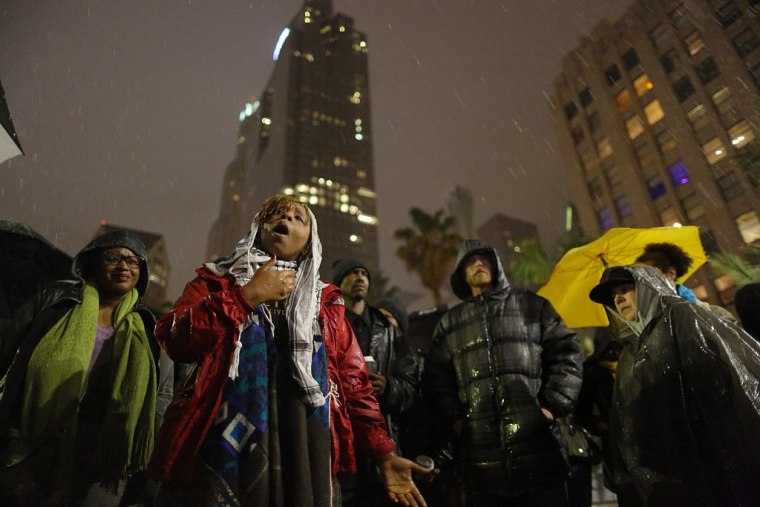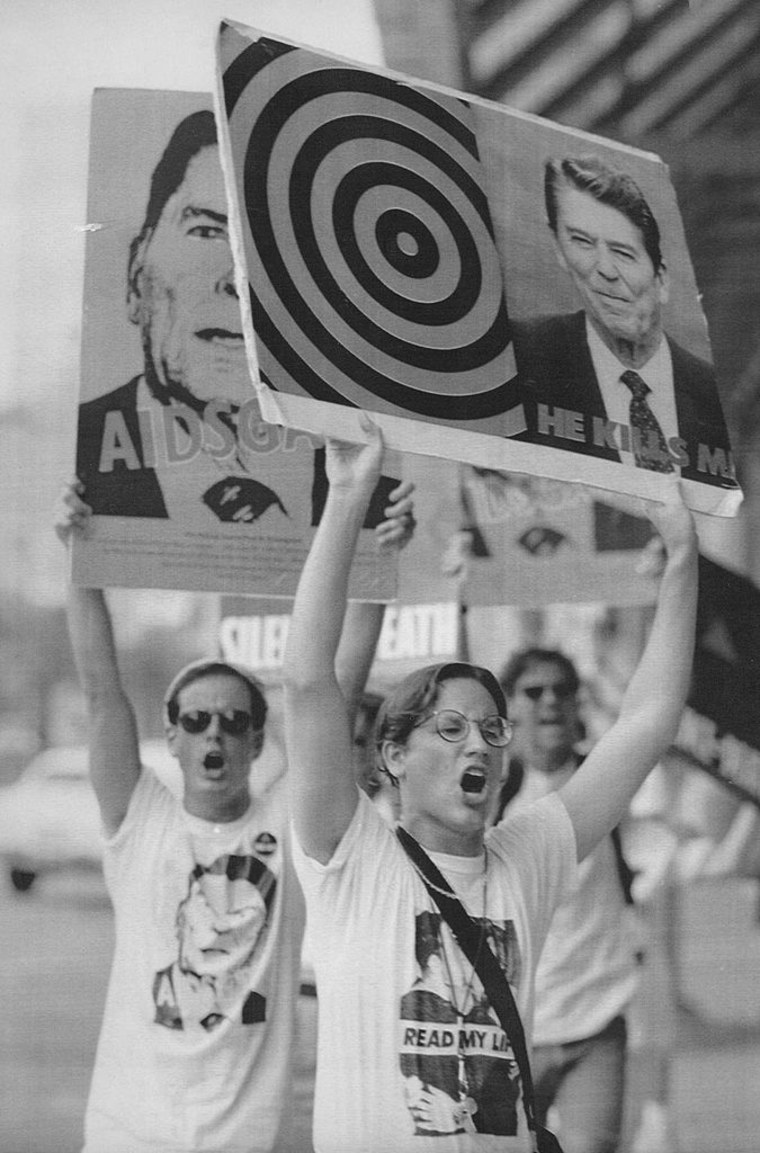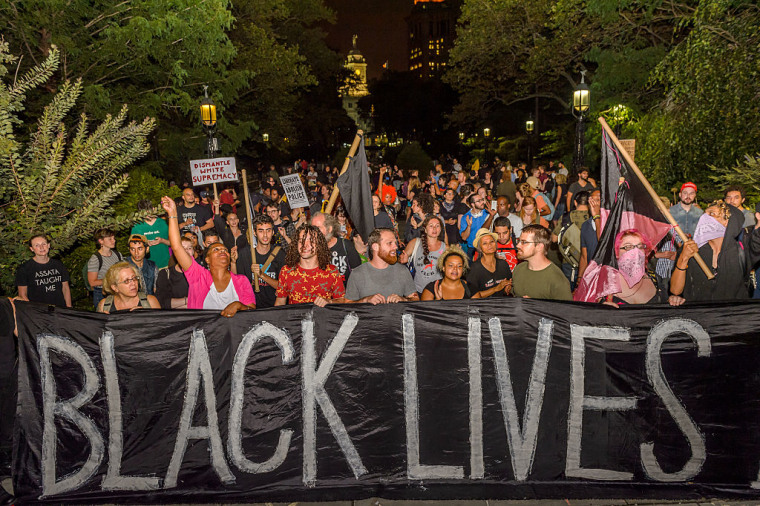Community organizer Patrisse Cullors is battling systemic racism. Activist Eric Sawyer is fighting an epidemic of AIDS. Both are outraged.
“I was appalled, I was disturbed, and I knew more had to be done," Cullors said. "I couldn’t just sit back and sulk." She was talking about the 2013 acquittal of George Zimmerman, a volunteer neighborhood watchman in Florida, who was accused of shooting and killing unarmed black teen Trayvon Martin.

The incident sparked the beginnings of Black Lives Matter -- a call to action against what its followers saw as systemic racism and police brutality against people of color. Cullors founded the movement with fellow organizers Alicia Garza and Opal Tometi.
“It’s part of how I was dealing with the grief,” Cullors said. “I had to put all my training into some sort of action.”
It’s a story much like Sawyer’s. In 1987, he helped form an advocacy group called AIDS Coalition to Unleash Power, more commonly known as ACT UP. The group came together over what it saw as a lack of government response to the AIDS crisis, which was killing thousands of people -- most of them gay and bisexual men.

Sawyer and his boyfriend, Scott Bernard, contracted the disease in the early 80s. Bernard succumbed to AIDS the year before ACT UP formed. Sawyer was devastated.
“Every ACT UP general meeting began with an announcement of who died that week,” he said. “It was the rage and the anger from seeing all of our friends die and from being ill and not having the government care."
Sawyer said the group channeled their grief into the energy needed to fight against the discrimination of people with AIDS.
“People were getting fired from their jobs and evicted from their apartments, denied public accommodations and health insurance,” he explained.
ACT UP’s outraged members took to the streets in dramatic acts of civil disobedience. Members chained themselves to bridges and tunnels, invaded the New York Stock Exchange and disrupted news broadcasts. Sawyer talked about how the group carried its dead members in coffins through New York City streets during rush hour.

“We were fighting to get access to safety net programs, so people wouldn’t get evicted when they got too sick to work -- or fired or laid off because they had AIDS,” Sawyer said.
Act Up worked alongside other activist groups to create change. It pressured the Food and Drug Administration to speed its approval process for new drugs, which AIDS patients desperately needed, according to Sawyer.
“We certainly began a public discourse about HIV. We helped force the government, the drug companies, to seriously invest in research. We helped get anti-discrimination laws passed,” he said.
Sawyer’s passion for activism reignited when Eric Garner, a 43-year-old black man from Staten Island, died in 2014 after a police officer held him in a choke hold. Sawyer attended demonstrations over Garner’s death several times a week.
“I was so outraged. Every life matters. Every life has equal value. So every one of those deaths at the hands of racism and discrimination and mistreatment by the police is just as tragic as an AIDS death,” Sawyer said.
Like ACT UP, Sawyer said the Black Lives Matter movement is “fighting for life and death issues.”
Lillian Faderman, an LGBTQ historian and author of "The Gay Revolution," also sees parallels between the two groups. “They’re both motivated by anger," she said. "Anger at governmental neglect, essentially."
The Washington Post reported that black Americans are 2.5 times as likely as white Americans to be shot and killed by police. And black and Hispanic men had the highest imprisonment rate in 2014, according to the Bureau of Justice Statistics. It’s an experience that hits close to home for Cullors, a Los Angeles native.
“I grew up in the middle of the war on gangs and the war on drugs," Cullors explained. "We had a significant amount of policing in our neighborhood … It was really clear that [it] wasn’t ours."
Cullors said her father suffered from drug addiction and spent time in and out of prison before he died.
“Incarcerating people takes off years of their life, and there was very little medical treatment inside jail and prison facilities,” she said.

Like ACT UP, the Black Lives Matter movement has used civil disobedience to effect change. It has organized marches, shut down highways, and occupied city halls.
Faderman said civil disobedience is not polite but is “absolutely essential” to creating social change.
“The AIDs epidemic was really the beginning of the [LGBTQ] community coming out on a large scale, and I think it helped tremendously -- the fact that the community showed itself that it could pull together, that it could be united," Faderman said.
Cullors said she's hopeful the Black Lives Matter movement, which earlier this month released a detailed policy agenda, is having an impact.
“The fight for black lives is about all of us," she said. "It is our work as a movement to push and challenge [the Obama Administration] and the next administration that’s in office."
"Nothing changes," she concluded, "without the people pushing to change it.”

